#bat99
Text
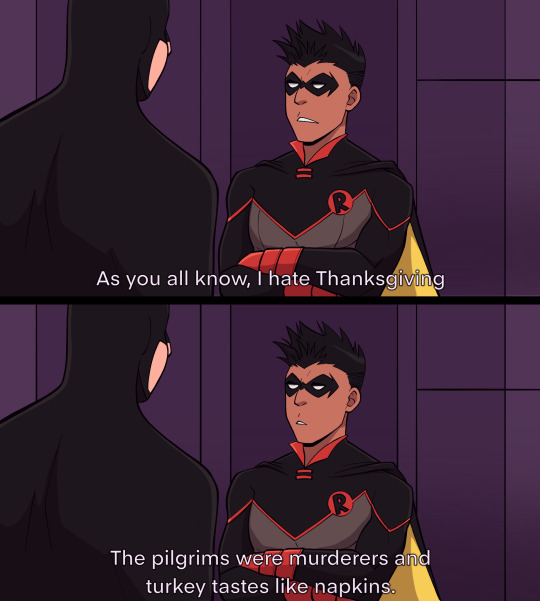
Batfam as B99 🩵 Happy Thanksgiving!
…i forgot to post this on tumblr on the actual holiday lol oops
#batman#batfamily#batfam#dc fanart#dccomics#batfamily as brooklyn 99#batfam as b99#bat99#damian wayne
342 notes
·
View notes
Photo

Ion-Rich Nebula
116 notes
·
View notes
Note
EITHER OF YOU GOT A FAVORITE STAR?
🟡 WHAT A QUESTION! WELL THERE’S SO MANY TO CHOOSE FROM- THERE’S UY SCUTI, WHICH IS THE LARGEST KNOWN SUPERGIANT WITH A RADIUS OF 738.35 MILLION MILES!! OR BAT99-98, WHICH IS THE MOST MASSIVE KNOWN STAR AT 226 SOLAR MASSES!! OR A MULTIPLE STAR SYSTEM SUCH AS POLARIS, MADE UP OF YELLOW SUPERGIANT POLARIS AA AND ITS MAIN-SEQUENCE COMPANIONS POLARIS B AND POLARIS AB! OR- WELL, I COULD GO ON FOREVER! I SUPPOSE EVERY STAR IS THE GREATEST IN ITS OWN WAY!!
🔴 quarks.
1 note
·
View note
Text
I HAVE MADE AN "ABOUT ME" PAGE
I'll figure out how to add it as a link in my bio in a bit. For now it's just a link in a post! Feel free to read through if you want!
It might be a little eye-strainy due to my colour choice of neon on black so I apologize for that. If it's a major issue I can always change up the colours to something softer!
It's my first time using anything like carrd and I barely understood what I was doing, but I like it! If you have any issues with my layout please let me know and I'll fix it ^-^
12 notes
·
View notes
Photo
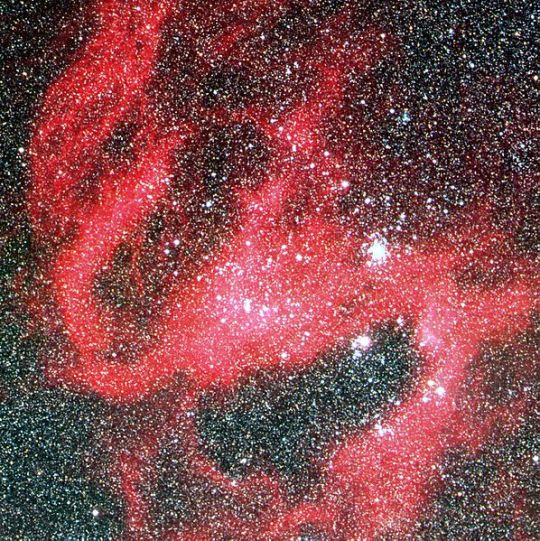
30.8.9 ESTRELLAS DE WOLF-RAYET: EL CATALOGO EXTRA- GALACTICO: La Estrella LH41-1042
LH41-1042 es una estrella Wolf-Rayet ubicada en la Gran Nube de Magallanes (LMC). Es un miembro extremadamente raro de la secuencia de oxígeno WO, el segundo que se descubrió en el LMC y uno de los únicos encontrados hasta ahora.
La estrella fue identificada en 2012 durante una investigación de la asociación estelar LH41, también conocida como NGC 1910, utilizando uno de los Telescopios de Magallanes de 6,5 m en el Observatorio Las Campanas en Chile.
LH 41-1042 se encuentra en la rica asociación estelar LH 41 ( NGC 1910 ) que contiene dos variables luminosas azules, S Doradus y R85, la estrella WN5 BAT99-27, y otra estrella WO LMC195-1. Las dos estrellas WO están a solo 9 "de distancia. Las estrellas WO se clasifican en función de la emisión de O VI a 381.1-383.4 nm, que es débil o está ausente en otras estrellas Wolf Rayet. La subclase WO4 se define como que tiene la relación de la intensidad de emisión de O VI a O V entre 0.5 y 1.8. En la nueva estrella, la relación de estas intensidades de línea fue 0.7.
La alta temperatura y alta luminosidad de LH 41-1042 producen un viento estelar que viaja a 3.500 km / sy está perdiendo masa alrededor de un billón de veces más rápido que el sol. Se estima que ha agotado su núcleo de helio y solo le quedan 9,000 años antes de que explote como una supernova de tipo Ic.
En la imagen ofrecida muestra N119 en detalle. N119 es una "región H II" en el LMC. La característica más notable es su pronunciada forma de espiral que recuerda a una galaxia espiral barrada. Es bastante grande, unos 400 x 600 años luz, y está situado en el lado norte de la barra estelar de la Gran Nube de Magallanes, cerca del centro de rotación del hidrógeno neutro en esta galaxia. Es esta barra la responsable de la densidad de estrellas mucho más alta en la mitad inferior de la foto de campo completo.
0 notes
Text
R136a1
R136a1 A near infrared image of the R136 cluster, obtained at high resolution with the MAD adaptive optics instrument at ESO’s Very Large Telescope. R136a1 is resolved at the center with R136a2 close by, R136a3 below right, and R136b to the left. Credit: ESO/VLT Observation data Epoch J2000.0 Equinox J2000.0 Constellation Dorado Right ascension 5h 38m 42.39s Declination −69° 06′ 02.91″ Apparent magnitude (V) 12.23 Characteristics Evolutionary stage Wolf–Rayet star Spectral type WN5h B−V color index 0.03 Astrometry Distance 163,000 ly (49,970 pc) Absolute magnitude (MV) −8.09 Details Mass 7002315000000000000♠315+60 −50 M☉ Radius 28.8-35.4 R☉ Luminosity 8,710,000 L☉ Luminosity (visual, LV) 150,000 L☉ Surface gravity (log g) 4.0 cgs Temperature 53,000 ± 3000 K Age 0 - 0.8 Myr Other designations BAT99 108, RMC 136a1, HSH95 3, WO84 1b, NGC 2070 MH 498, CHH92 1, P93 954 Database references SIMBAD data RMC 136a1 (usually abbreviated to R136a1) is a Wolf–Rayet star located at the center of R136, the central condensation of stars of the large NGC 2070 open cluster in the Tarantula Nebula. It lies at a distance of about 50 kiloparsecs (163,000 light-years) in a neighbouring galaxy known as the Large Magellanic Cloud. It has the highest mass and luminosity of any known star, at 315 M☉ and 8.7 million L☉, and is also one of the hottest at around 53,000 K.
More details Android, Windows
0 notes
Text
Wolf-Rayet spin at low metallicity and its implication for Black Hole formation channels. (arXiv:1703.09857v1 [astro-ph.SR])
The spin of Wolf-Rayet (WR) stars at low metallicity (Z) is most relevant for our understanding of gravitational wave sources such as GW 150914, as well as the incidence of long-duration gamma-ray bursts (GRBs). Two scenarios have been suggested for both phenomena: one of them involves rapid rotation and quasi-chemical homogeneous evolution (CHE), the other invokes classical evolution through mass loss in single and binary systems. WR spin rates might enable us to test these two scenarios. In order to obtain empirical constraints on black hole progenitor spin, we infer wind asymmetries in all 12 known WR stars in the Small Magellanic Cloud (SMC) at Z = 1/5 Zsun, as well as within a significantly enlarged sample of single and binary WR stars in the Large Magellanic Cloud (LMC at Z = 1/2 Zsun), tripling the sample of Vink (2007). This brings the total LMC sample to 39, making it appropriate for comparison to the Galactic sample. We measure WR wind asymmetries with VLT-FORS linear spectropolarimetry. We report the detection of new line effects in the LMC WN star BAT99-43 and the WC star BAT99-70, as well as the famous WR/LBV HD 5980 in the SMC, which might be evolving chemically homogeneously. With the previous reported line effects in the late-type WNL (Ofpe/WN9) objects BAT99-22 and BAT99-33, this brings the total LMC WR sample to 4, i.e. a frequency of ~10%. Perhaps surprisingly, the incidence of line effects amongst low-Z WR stars is not found to be any higher than amongst the Galactic WR sample, challenging the rotationally-induced CHE model. As WR mass loss is likely Z-dependent, our Magellanic Cloud line-effect WR stars may maintain their surface rotation and fulfill the basic conditions for producing long GRBs, both via the classical post-red supergiant (RSG) or luminous blue variable (LBV) channel, as well as resulting from CHE due to physics specific to very massive stars (VMS).
from astro-ph.HE updates on arXiv.org http://ift.tt/2o9Pfzj
0 notes
Text
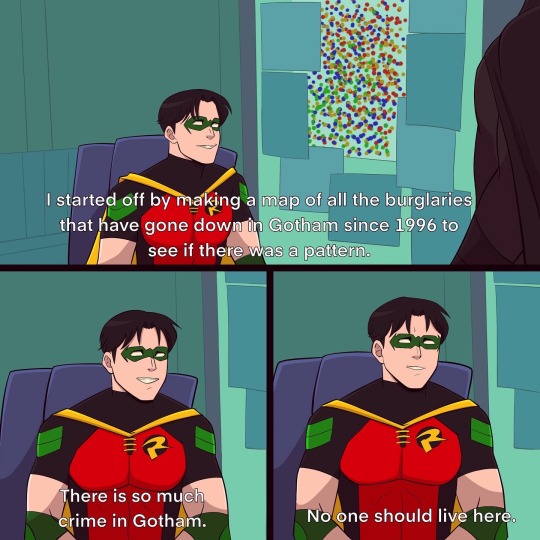
Batfam as B99 💕
New one for the one year anniversary of the first one lol
#batfamily as brooklyn 99#source: brooklyn 99#batfam as b99#bat99#batfamily#Batman#batfam#tim drake#dc#dccomics#dcfanart
3K notes
·
View notes
Text
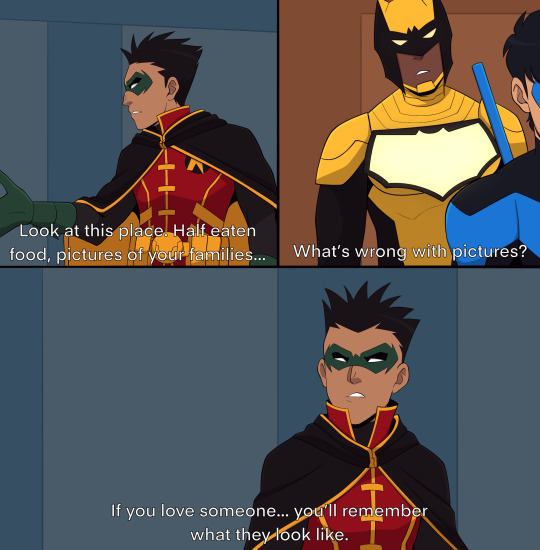
New Batfam as B99 💕
#this took me forever I’m sorry#bat99#batfamily as b99#source: brooklyn 99#batfam as b99#batfamily as Brooklyn 99#brooklyn 99#Batman#dccomics#dc#batfam#batfamily#damian wayne#duke thomas#dick grayson#nightwing
1K notes
·
View notes
Text

Batfam as Brooklyn 99 ❤️
279 notes
·
View notes
Text

Batfam as Brooklyn 99 💕
Could work with any Robin, really
#bat99#batfamily as b99#source: brooklyn 99#batfam#batfamily#nightwing#dick grayson#bruce wayne#Batman#dc#dc comics#dc fanart
8K notes
·
View notes
Text

Batfamily as Brooklyn 99 💕
#bat99#batfamily#batfam as b99#source: brooklyn 99#batfamily as b99#batfam#Batman#nightwing#tim drake#joker#red hood#jason todd#stephanie brown#batgirl#dc#dc comics
9K notes
·
View notes
Text
Every Batfam as Brooklyn Nine-Nine I’ve done part 5






Part 1 | Part 2 | Part 3 | Part 4
#dc comics#batman#batfamily#dc#tim drake#dc fanart#batfam#nightwing#batfam as b99#bat99#batfamily as b99#source: brooklyn 99
2K notes
·
View notes
Text

Batfam as B99 💕
New suits for all but Timmy
#batfamily#batfam as b99#batfam#bat99#dc red hood#red hood#jason todd#tim drake#Red Robin#nightwing#dick grayson#barbara gordon#batgirl#dc fanart#dc comics#Batman
5K notes
·
View notes
Text
Every Batfam as B99 drawing I’ve done thus far in one post 💕
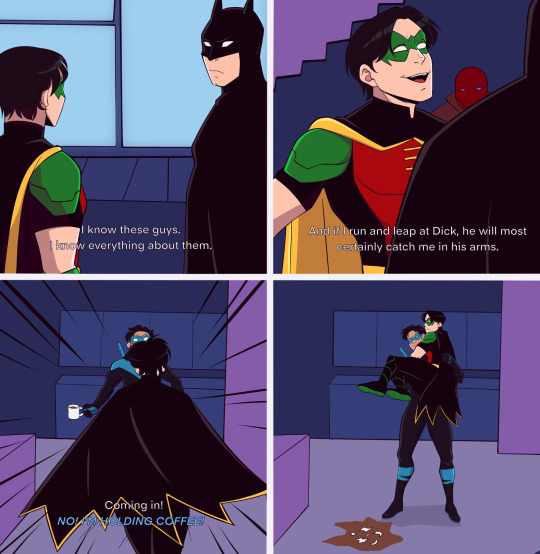






#batfamily#bat99#batfam as b99#Nightwing#tim drake#damian wayne#dick grayson#kate kane#barbara gordon#batgirl#jason todd#red hood#dc comics#robin#Batman#batman and robin#alfred pennyworth#source: brooklyn 99#b99bats
8K notes
·
View notes
Text

Batfam as Brooklyn Nine-Nine 💕
Bruce as Holt
#dc comics#batman fanart#batfamily as b99#bat99#batfam as b99#source: brooklyn 99#Batman#bruce wayne#batfam#batfamily
1K notes
·
View notes